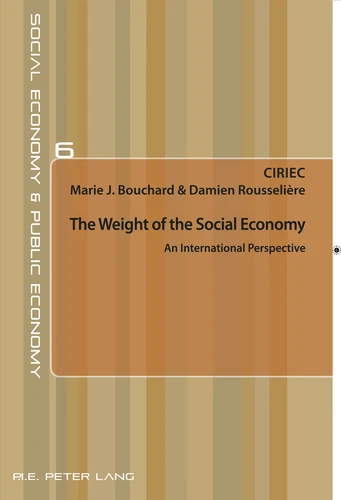The Weight of the Social Economy. An International Perspective
Par : ,Formats :
- Paiement en ligne :
- Livraison à domicile ou en point Mondial Relay indisponible
- Retrait Click and Collect en magasin gratuit
- Réservation en ligne avec paiement en magasin :
- Indisponible pour réserver et payer en magasin
- Nombre de pages333
- PrésentationBroché
- FormatGrand Format
- Poids0.46 kg
- Dimensions15,0 cm × 21,8 cm × 1,7 cm
- ISBN978-2-87574-287-2
- EAN9782875742872
- Date de parution01/08/2015
- CollectionSocial Economy & Public Econom
- ÉditeurPeter Lang
Résumé
What is the weight of the social economy ? How should we measure it ? Throughout the world, cooperatives, non-profit and mutual benefit organizations, foundations and other social enterprises play an important role in job creation, social cohesion, social innovation, regional development and environmental protection. Observations tend to confirm the ability of the social economy to contribute to balancing economies, mainly by serving as an anti-cyclical force in the face of economic crises.
However, many countries and regions lack statistical information about its weight, size and scope on their territory. This book fills a gap in the literature about the social economy. It seeks to explain why it is important to have statistics on it, to understand how they are produced, and to project how the social economy might be better understood in the future. The book offers researchers and decision-makers an overview of the current state of knowledge on these topics.
However, many countries and regions lack statistical information about its weight, size and scope on their territory. This book fills a gap in the literature about the social economy. It seeks to explain why it is important to have statistics on it, to understand how they are produced, and to project how the social economy might be better understood in the future. The book offers researchers and decision-makers an overview of the current state of knowledge on these topics.
What is the weight of the social economy ? How should we measure it ? Throughout the world, cooperatives, non-profit and mutual benefit organizations, foundations and other social enterprises play an important role in job creation, social cohesion, social innovation, regional development and environmental protection. Observations tend to confirm the ability of the social economy to contribute to balancing economies, mainly by serving as an anti-cyclical force in the face of economic crises.
However, many countries and regions lack statistical information about its weight, size and scope on their territory. This book fills a gap in the literature about the social economy. It seeks to explain why it is important to have statistics on it, to understand how they are produced, and to project how the social economy might be better understood in the future. The book offers researchers and decision-makers an overview of the current state of knowledge on these topics.
However, many countries and regions lack statistical information about its weight, size and scope on their territory. This book fills a gap in the literature about the social economy. It seeks to explain why it is important to have statistics on it, to understand how they are produced, and to project how the social economy might be better understood in the future. The book offers researchers and decision-makers an overview of the current state of knowledge on these topics.






